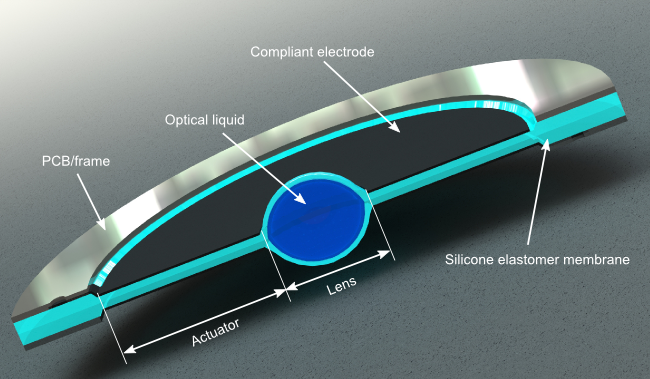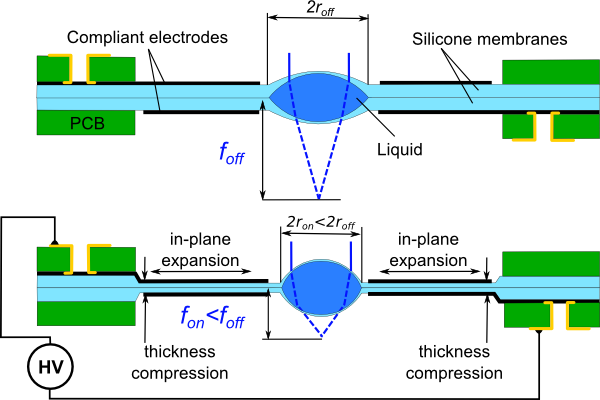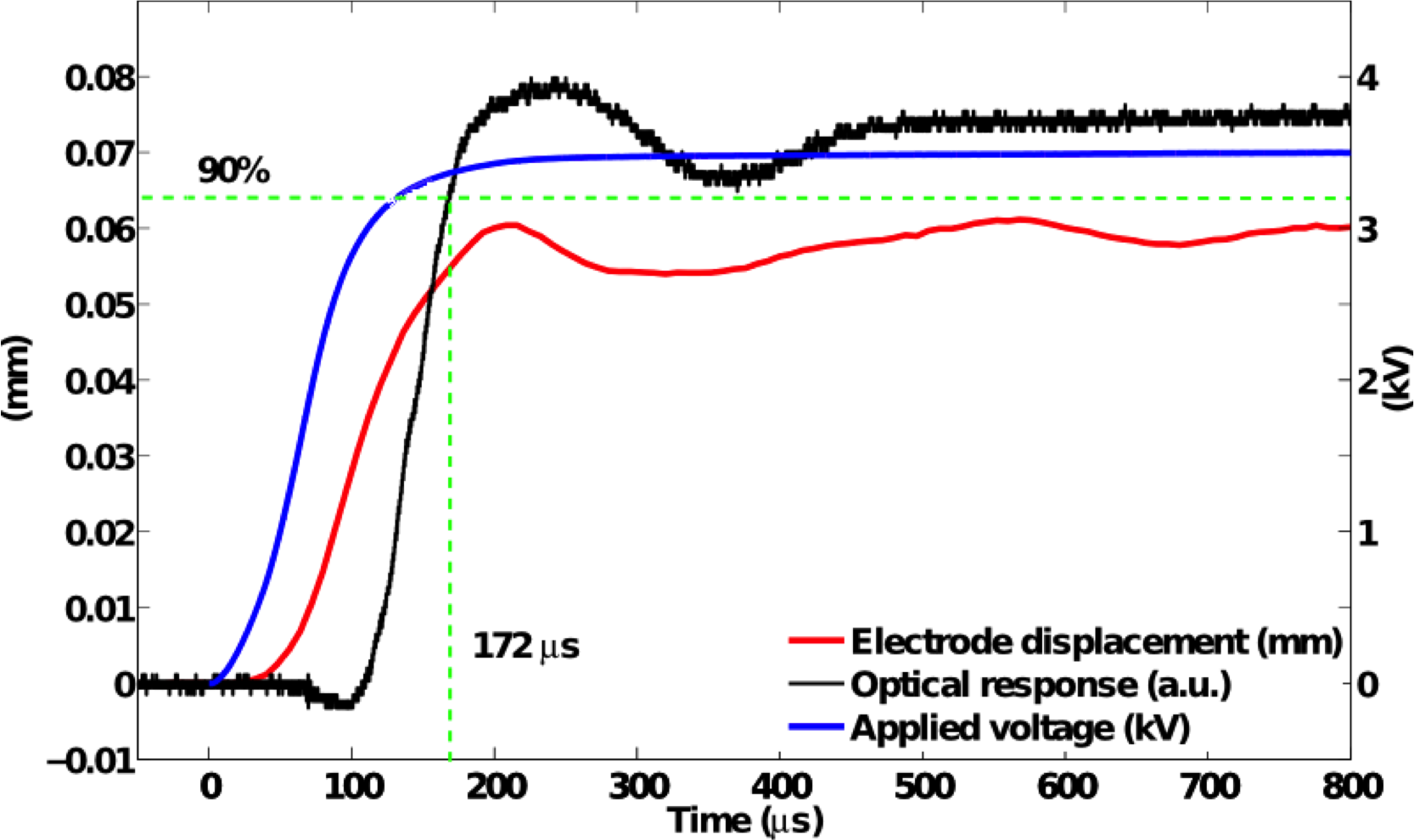Concept

Dielectric elastomer actuators (DEAs) (one of our lab’s main research focus) have a lot of outstanding features: they are light-weight, soft, compliant, conformable and can generate huge strains compared to other actuation methods. However, one of their drawback is that they are often based on materials that are mechanically extremely lossy, which makes them slow to reach their target position: depending on the material used, this can take up to one minute or more.
Here, we demonstrate that by a careful choice of material and design, very fast actuators can be made, which we illustrate through the example of a soft tuneable lens. The lens is entirely based on plastic materials, which are either soft and stretchable, or flexible (see photo above). The resulting lens can change its focal length by 20% and do so in less than 200 microseconds, which makes it extremely fast, even compared to standard actuation technologies, as commercial tuneable lenses often have a response time in the range of a few ms.
Lens working principle

The lens principle has been developed by Carpi et al. in 2011 (Carpi, F.; Frediani, G.; Turco, S. & De Rossi, D., Bioinspired Tunable Lens with Muscle-Like Electroactive Elastomers, Advanced Functional Materials, 2011, 21, 4152-4158) for the case of acrylic elastomer with hand applied grease electrodes.
Here, we use the same principle, but replace the mechanically lossy acrylic elastomer by a silicone membrane with a low mechanical loss tangent, allowing us to multiply the response speed by a factor of ~1000. We also developed a reliable fabrication procedure including stamping of precisely defined compliant electrodes, which leads to very robust and wear-resistant devices capable of being actuated for 400 million cycles.

The lens consists of two circular prestretched silicone membranes that are bonded together with a small pocket of liquid trapped at the center, which forms a bi-convex lens. Compliant electrodes are applied on the annular region around the lens. When a voltage is applied between the electrodes, the generated electrostatic pressure causes the electrodes to expand in-plane and to compress the lens, thus changing its shape. When the lens is compressed, its radius of curvature decreases, which causes a diminution of the focal length of the device. The focal length can typically be reduced by 20% from its non-actuated value.
Video of the fast soft tuneable lens
Embed of video is only possible from Mediaspace, SwitchTube, Vimeo or Youtube
Results

The above graph shows the lens response to a voltage step occuring at time t=0. The blue curve represents the lens driving voltage, which is not a perfect step due to the finite bandwidth of the high voltage amplifier used. The red curve shows the displacement of the electrode edge, i.e. the mechanical reaction of the actuator to the voltage step. This displacement was observed with a high speed camera. Finally the black curve shows the optical response, which was obtained by measuring the energy density of the beam (an indirect characterisation of the focal lenght). The optical response presents some oscillation, due to the shockwave propagated by the optical liquid in the lens, but it takes less than 200 microseconds to reach the final value with a tolerance of +/- 10% (settling time). This is faster than any tuneable lens capable of holding a fixed focal length regardless of the actuation technology, and much faster than the typical response of a DEA that can be counted in minutes if the dielectric is an acrylic elastomer.